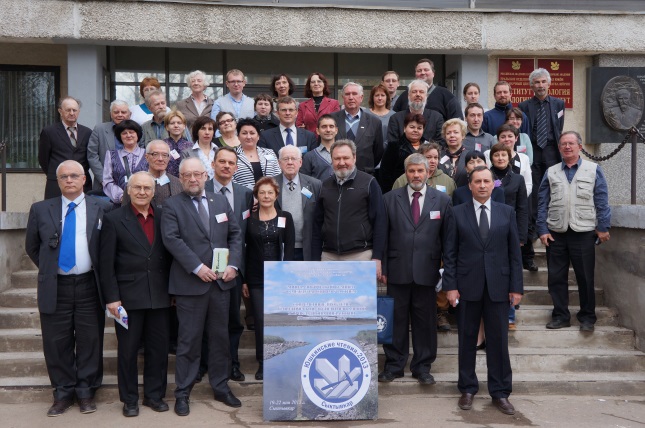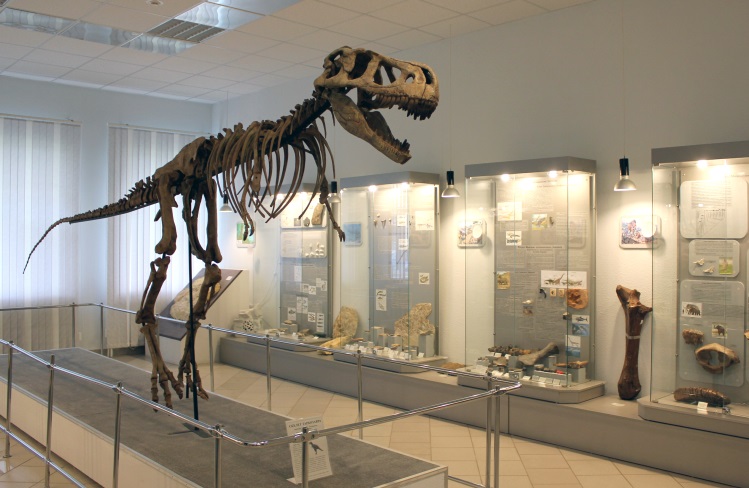Institute of Geology of Komi Science Centre of the Ural Branch of the Russian Academy of Sciences (IG FRC Komi SC UB RAS)
The Institute of Geology named after Academician N.P. Yushkin of the Komi Science Center of the Ural Branch of the Russian Academy of Sciences was organized in 1958 on the basis of the Department of Geology of the Komi Branch of the USSR Academy of Sciences, founded in 1944 by the initiative of the prominent geology researcher of the European North, Hero of Socialist Labor Professor A. A Chernov within the Syktyvkar group of the Northern Base of the Academy of Sciences created in 1939. The first director of the Institute of Geology was Yu. P. Ivensen (1958–1961), next 24 years (1961–1985) the Institute was headed by M. V. Fishman, from 1985 to 2008 the Institute was headed by Academician N. P. Yushkin, from 2008 to 2017 - Academician A. M. Askhabov. In 2018, the Institute was included in the Federal Research Center “Komi Science Center of the Ural Branch of the Russian Academy of Sciences”. At present the Institute is headed by Cand. Sc. (geol.-miner.) I. N. Burtsev.
The Institute employs more than 230 people, including one Academician, 20 Doctors and 66 Candidates of sciences. The structure includes 16 laboratories (Regional Geology, Stratigraphy, Cenozoic Geology, Petrography, Mineralogy, Experimental Mineralogy, Diamond Mineralogy, Geology of Oil And Gas Basins, Organic Geochemistry, Lithology and Geochemistry of Sedimentary Formations, Paleontology, Syktyvkar Geophysical Observatory, Mineral Resources, Mineral Raw Technology, Mineral Raw Chemistry, Integrated Assessment and Engineering of Georesources), Scientific Group of Isotopic Geochemistry, Publishing And Information Department, Geological Museum named after A. A. Chernov, Department of Sample Preparation and Processing of Stone Material, Scientific Research Automation Group, Logistics Group, Group for Operation and Repair of Buildings and Structures. Geonauka Center for Collective Use functions on the basis of the Institute.

The Institute is a large center of geological science in the European North-East of Russia, which comprehensively solves urgent problems of geological structure and geohistorical development of the territory, formation and development of the mineral resource base, creation of new industrial facilities and infrastructure facilities related to the extraction, processing and transportation of mineral raw. The Institute carries out interdepartmental and interregional coordination of geological researches, conducts a wide range of fundamental and applied researches in all branches of Earth sciences.
The Institute established scientific schools: a regional geological school, founded by A.A. Chernov and developed by his disciples and followers, a world-known mineralogical school of Academician N.P. Yushkin and a top-ranked crystallographic school of Academician A.M. Askhabov.
The Institute is equipped with a complex of scientific research and auxiliary equipment for analysis of elemental and isotopic composition, structural features, physical properties and technological characteristics of mineral matter, possesses original methods and techniques of geological and mineralogical researches. The Geonauka Center for Collective Use of scientific equipment functions at the Institute.
The Publishing and Information Department with a modern printing base provides copying and distribution of scientific results in the professional society. The scientific journal “Vestnik of the Institute of Geology of Komi Science Center, Ural Branch of the Russian Academy of Sciences” has been published since 1995 and listed in the Higher Attestation Commission and the international GeoRef database.
Institute staff conduct expeditionary works in Russia and abroad. The Institute of Geology has accumulated a huge experience and knowledge on the Arctic, being a unique center of competencies, the keeper of stone material and other primary geological information.
Annually the Institute organizes and conducts large scientific events. Many of them have a long history and became the hallmark of the Institute. These are mineralogical seminars observing contemporary problems of theoretical, experimental and applied mineralogy (since 2013 they have been entitled Yushkin Memorial seminars), annual scientific conference “Structure, matter, history of lithosphere of the Timan-Northern Ural segment” (since 1991), Chernov Memorial seminars, regional geological, oil and gas, lithological, geochemical, paleontological and many other scientific forums. Geological congresses have been notable events in the geological life of not only our republic, but also Russia since 1942.

A special structural unit of the Institute is the Geological Museum named after A. A. Chernov (since 1968). Monographic, exhibition and archive funds of the museum include more than 165 thousand artifacts. The expositions of the museum halls demonstrate features of the geological structure and development of the Timan-Northern Ural region, the most important endogenous and exogenous formations, regional mineral diversity, evolution of the organic world, minerals, gems, jewelry and stone art. The museum conducts a large informational, educational, popularization and scientific work. Every year the museum receives thousands of guests; it was visited by representatives of more than fifty countries, by state and regional leaders. Currently the museum is one of the best regional museums and among ten largest specialized museums of a similar profile in the country.

Main trends of scientific activity
- study of geological structure and history of the Earth’s crust in the European North-East and the North of the Urals, development of key problems of regional tectonics, stratigraphy and paleontology, magmatism, lithology, topomineralogy, geochemistry, creation of complex models of structure and development of lithosphere;
- study of formation conditions and distribution of mineral deposits, development of new methods for forecasting, prospecting and evaluation of deposits, study of technological properties of ores, geological and economic analysis of mineral resources, development of rational nature management during extraction and processing of mineral raw;
- development of problems of theoretical and applied mineralogy, study of processes and mechanisms of mineral formation, principles of evolution of the mineral world, interaction of mineral and biological systems, creation of scientific basis and methods for producing artificial minerals, crystals and mineral-based materials;
- development of strategies for the development of fuel-energy, mineral raw complex, environmental protection, analysis of climate change, monitoring of ecological and geological systems of the North and the Arctic, study of history of natural science and technology and problems of preserving the geological heritage.